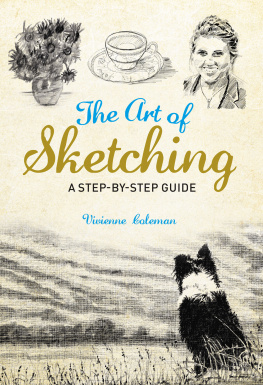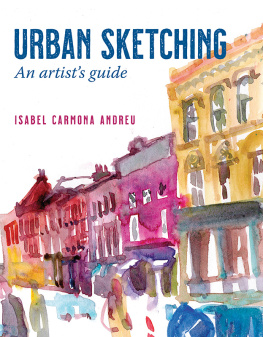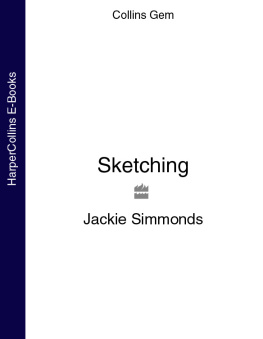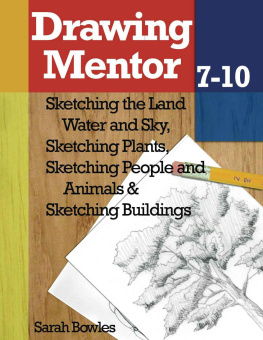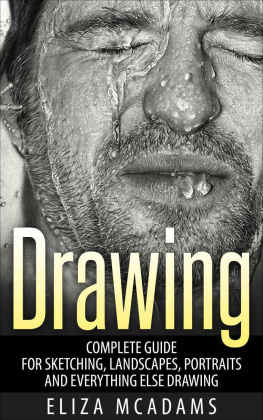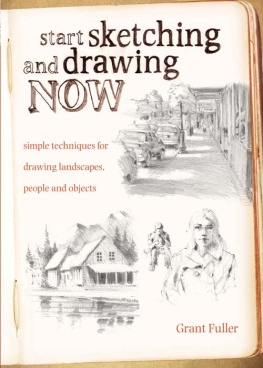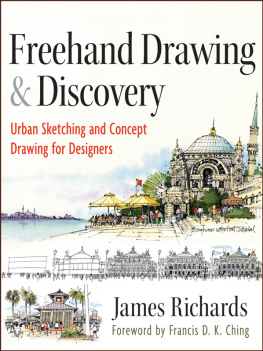
Introduction
If you would like to start sketching, or to improve some sketching skills you have already acquired, then this is the book for you. It shows you in simple steps how to record the world around you in quick sketches a kind of visual diary in which you can capture special moments on paper.
Whatever your sketching preference, be it portraits, urban scenes, still life, animals or landscapes, this book will help you to explore your own style and guide you through a variety of subjects in easy, confidence-building steps.
It couldnt be easier theres no need to worry if you think you cannot sketch, or are nervous about trying because of a previous bad experience. If you feel a bit guilty about making time for a new leisure pursuit, rest assured that most of the examples are designed to be completed in minutes.
If you like, you can spend just five or ten minutes each day practising your sketching skills over coffee or lunch, on the bus or train, or on time-out relaxing at home or on holiday. Youll discover that your sketching will vastly improve with practice and that your life experiences will add richness and quality to your work.
A sketch can be described as a rough drawing, general outline, or brief idea to depict a subject of interest. Sketches are looser, freer and more individual works of art than drawings, and are often conceptual and quickly rendered so accuracy is not always essential, or even achievable! Rather, sketches capture a fleeting impression, a mood, or a key feature of a subject. They can also be preparations for a more formal or detailed drawing or painting.
We are all different so naturally sketch in different ways, and you might be pleased to learn that there is no right or wrong way to sketch. Even famous sketchers had their own style, for example, Leonardo da Vinci (14521519), Michelangelo (14751564), and Vincent Van Gogh (18531890). If you like, you can research their work to discover more about them and be even more inspired.
This book includes everything from basic materials and where to start to more advanced subjects and techniques. Youll find youll be able to sketch anything, anywhere, at any time!
Chapter 1
Getting Started
In this chapter we shall look at the basic things youll need to start sketching and how youll make those first marks on paper. The aim is to keep things easy and simple. Dont worry if youre a complete beginner, for the exercises will take you from first steps to competent sketching in easy stages with plenty of examples to try along the way.
To start with, well look at sketching materials such as pencil, charcoal, graphite and pen and how you can use these to create various effects on the page. As you learn different techniques youll be given the opportunity to experiment so that you can discover your favourite ways of working and develop your own style.
Well look at lines and shapes and how to bring these to life with light and dark tones to create volume and realism, and youll also begin to look at things in a new way.
Many exercises are designed to be completed in only a few minutes, so you can practise only a little while every day if that suits you.

Basic materials
You may be surprised to learn how few materials you really need to begin sketching in fact, just a pencil or pen and some paper! Of course, these are available in different forms, so well look at a range of these basic sketching materials which are lightweight, relatively inexpensive and easy to obtain so its easy for you to sketch wherever you happen to be.
Pencils and pens
The first step is to choose something to make marks with. Shown here is a selection of sketching tools along with the different marks they make on the page.
If youre inspired to do a quick sketch but dont have your usual sketching tools with you, dont worry! Just have a look around and see whats nearby perhaps something from your bag or desk such as a biro or pencil, or even a marker pen.
Notice the differences and similarities between the marks, which vary from thick to thin (marker pen vs biro) and from dark to light (charcoal vs pencil). In the following pages youll discover how to use these tools to create different effects, for example, a pencil for finer detail but a thick permanent marker pen for large, bold and expressive marks.
Graphite pencils are available in different grades, ranging from very hard and fine (9H) to very black and soft (9B). H stands for Hard and B for Black. Throughout this book, for simplicity, well use a mid-range pencil grade (HB: Hard and Black) because its commonly available, versatile and perfect for sketching.
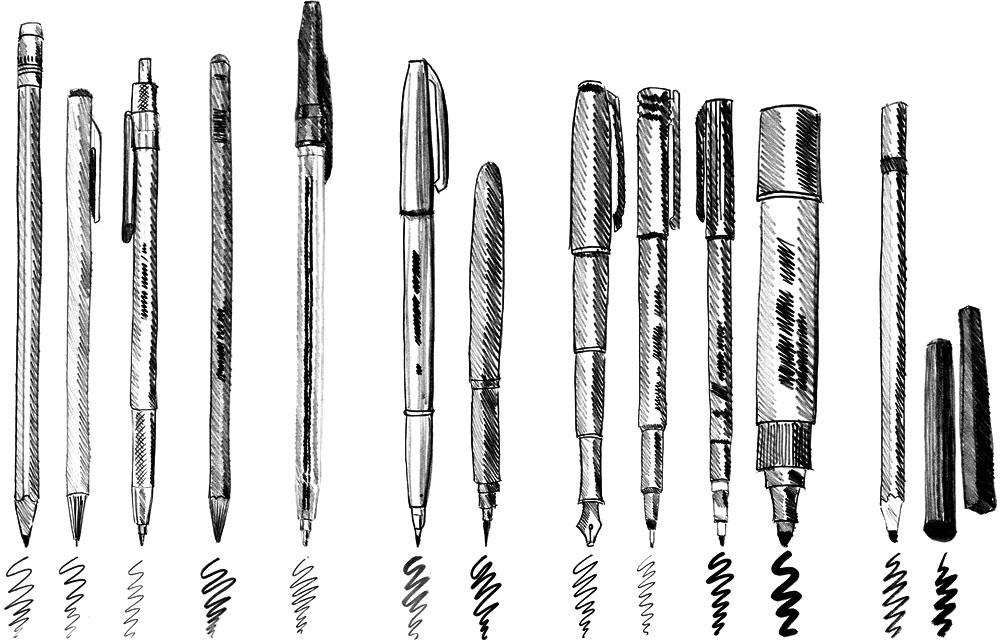
Different sketching tools and the marks they make Left to right: graphite pencil; revolving/mechanical pencil; clutch pencil; woodless graphite pencil; biro; felt-tip pen (grey); brush pen; calligraphy fountain pen; fineliner or drawing pen; permanent marker pen (medium); permanent marker pen (thick); charcoal pencil; charcoal sticks.
There are advantages and disadvantages with any sketching tool. For example, fineliner and permanent marker pens make crisp, mono-tonal but permanent marks, so you cannot correct mistakes; whereas pencils and graphite pencils make multi-tonal marks that can be easily erased. The best thing to do is experiment to find your favourites.
Paper
Paper is available in all shapes and sizes, from flat sheets, sketch pads and bound sketchbooks to large rolls. Smaller sketchbooks are ideal for sketching when youre out and about, particularly spiral-bound ones that allow you to fold the book back on itself, thus avoiding the pages trying to close as you sketch. Loose, flat sheets and larger sketchbooks are better suited to sketching large-scale work indoors.
Paper is available in different thicknesses (or weights). Youll usually find this information on the sketchbook cover or the packaging of loose paper, written as grams per square metre (gsm) or pounds (lb) per ream (500 sheets). Papers range from thin 80gsm (50lb) to better quality, thicker 200gsm (120lb). Boards tend to be heavier (thickness measured in microns, 1,000 of a millimetre) and the higher the value, the thicker the board. Thicker paper tends to be more expensive and is not necessary for most sketching; cartridge paper (120130gsm/7580lb) is generally fine for the purpose.

Smooth (top) and rough (bottom) surface texture with three sketching tools: charcoal, HB pencil and ink pen.
Paper may have a smooth surface (such as Bristol board) or a rough one (for example, the rough grade of watercolour paper). Smooth paper is great for ink and graphite but its harder to create different tones than on a rougher surface; charcoal can easily become smudged as it doesnt really adhere to the paper surface (see how its smudged in the figure above). Rough-textured paper has more surface grip (or tooth), is better for charcoal, and can result in interesting textures from both pencil and ink.
Of course, you can sketch on anything. Years ago and with time to kill, I sketched my surroundings on the only available paper the inside of a thin paper bag. It was not ideal as it had images of hardware goods printed all over the other side!
Next page
